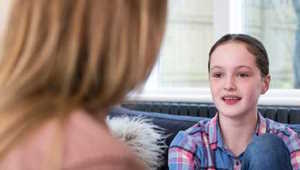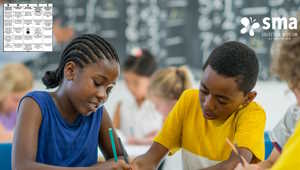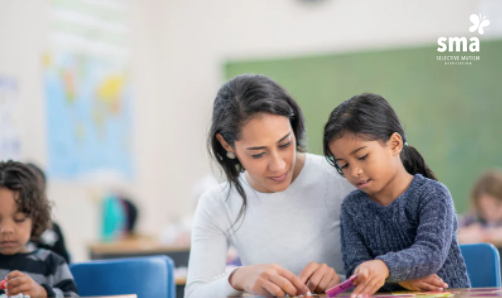Blog
Is a Selective Mutism Intensive Treatment Camp Right for our Family?
Many caregivers of children with SM will have heard of Selective Mutism treatment camps before—whether on SMA’s events page, through social media groups, or by word of mouth. Many have questions about how these camps operate, what progress an average camper makes through such programs, and whether such treatment camps are an appropriate fit for their child or family. Since each camp has its own unique schedule, age range, and program requirements, we suggest reaching out to the camp staff directly to learn more about any specific camps you are considering attending. However, we hope to offer a brief overview of this treatment model.
Treatment camps for SM fall under the umbrella of “intensive” treatment—referring to a concentrated dose of intervention occurring over a relatively short amount of time. The duration of SM treatment camps can vary—with most programs offering a 5-day camp, and some programs also offering shorter 1-, 2-, or 3- day camp offerings.
Treatment camps for SM employ exposure-based treatment approach; that is, campers are immersed in the same real-life talking situations that they find anxiety-provoking and receive live support from a specially-trained adult in achieving specific talking goals. During camp, exposure opportunities typically occur in the context of both typical classroom scenarios (e.g., answering a question in morning meeting, inviting a classmate to partner up for a project, giving a classroom presentation) and community field trips (e.g., ordering an ice cream cone, answering questions from an extracurricular instructor). Most treatment camps also include concurrent caregiver educational sessions and/or live coaching, where caregivers learn more about the diagnosis and how to carry out intervention strategies in the real world. Other intervention strategies might be utilized during the camp, such as education for the campers about anxiety, relaxation training, and social skill practicing.
Many camps (but not all) require lead-in sessions which take place before the camp itself gets underway. In the lead-in sessions, prospective campers with SM meet with the adults with whom they will have frequent interactions in camp (such as their immediate camp counselor, the therapist serving in the “teacher” role at camp, or one of the camp leaders). A caregiver often initially supports the camper to get comfortable with these adults and eventually fades-out of the interaction, so the camper has time to build a relationship with and get comfortable with speaking with camp staff in 1:1 interactions.
Many children and adolescents with SM would be good candidates to participate in a treatment camp. For some, however, other therapy models might better serve their individual goals. For instance, some kids with SM might already verbalize fairly well in school and extracurricular environments, so the school-like group practices offered in camp aren’t the best fit. For others, such as children with very severe presentations, the specific verbal goals addressed in camp might be too challenging at this time, and another model (such as weekly therapy or a 1:1 intensive) might be more appropriate. Likewise, some parents might find that they themselves would benefit from a higher degree of education and coaching before they are ready to effectively partner up with their child and clinical staff to get the most out of the camp experience.
There is growing research (Cornacchio et al., 2019; Haggerty et al., 2022; Hong et al., 2022) to support intensive group therapy models. Understandably, there are many variables that contribute to treatment outcomes (such as the child’s symptom severity, the child’s age at the time of treatment, and whether the child experiences other concerns that can complicate treatment), but so far, the data is very promising. In one study (Cornacchio et al., 2019), researchers found that campers demonstrated both immediate gains and further progress after treatment concluded. Immediately after camp, 50% of the program participants were judged to be clinical responders and 7% no longer met criteria for SM. Their progress continued; after 8 weeks of school, 63% were considered treatment responders and 46% of participants no longer met criteria for SM. In another study (Haggerty et al., 2022), campers had comparable results in terms of response-to-treatment (i.e., 36% and 64% with caregiver-reported significant improvements at the conclusion of camp and 3 months post-camp, respectively). This effect was most noticeable in the younger age groups with 89% of participants ages 4-8 demonstrating significant improvements at 3 months post-camp.
In summary, treatment camps for SM can be a great option for many children and adolescents with SM. Families interested in participating in a treatment camp are encouraged to reach out to programs they are considering, as many offer a summer camp option intended to help children with SM prepare for their new school year.
Sincerely,
Katelyn Reed, M.S., LLP
SMA Board of Directors
References:
Cornacchio, D., Furr, J.M., Sanchez, A.L., Hong, N., Feinberg, L.K., Tenenbaum, R., Del Busto, C., Bry, L.J., Poznanski, B., Miguel, B.A., Ollendick, T.H., Kurtz, S.M.S., & Comer, J.S. (2019). Intensive group behavioral treatment (IGBT) for children with selective mutism: A preliminary randomized clinical trial. Journal of Consulting and Clinical Psychology, 87, 720-733. doi:10.1037/ccp0000422
Haggerty, D., Carlson, J.S., Kotrba, A. (2022). A pilot feasibility study of an intensive summer day camp intervention for children with selective mutism. Children 2022, 9, 1732.
https://doi.org/10.3390/children9111732
Hong, N., Herrera, A., Furr, J.M., Georgiadis, C., Cristello, J., Heymann, P., Dale, C., Heflin, B., Silva, K., Conroy K., Cornacchio, D., & Comer, J.S. (2022). Remote Intensive Group Behavioral Treatment for Families of Children with Selective Mutism. Evidence-based Practice in Child and Adolescent Mental Health. DOI: 10.1080/23794925.2022.2062688




